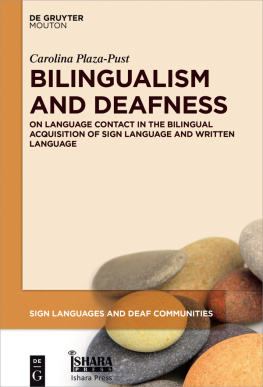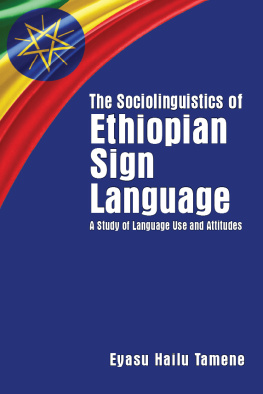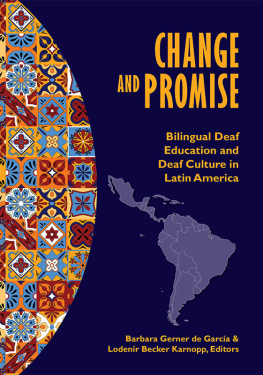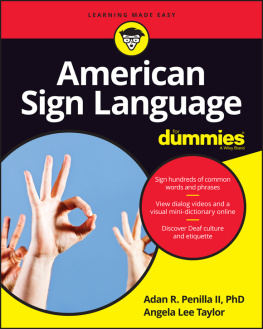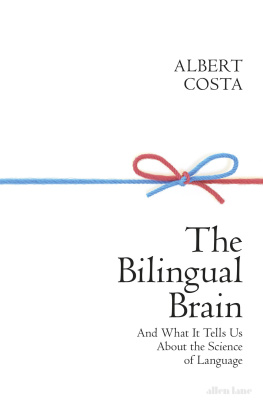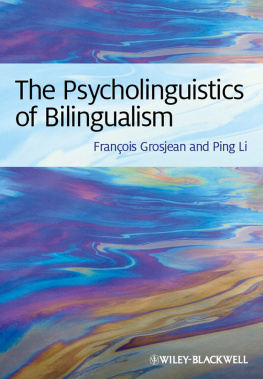Carolina Plaza-Pust - Bilingualism and Deafness: On Language Contact in the Bilingual Acquisition of Sign Language and Written Language
Here you can read online Carolina Plaza-Pust - Bilingualism and Deafness: On Language Contact in the Bilingual Acquisition of Sign Language and Written Language full text of the book (entire story) in english for free. Download pdf and epub, get meaning, cover and reviews about this ebook. year: 2016, publisher: de Gruyter Mouton, genre: Science. Description of the work, (preface) as well as reviews are available. Best literature library LitArk.com created for fans of good reading and offers a wide selection of genres:
Romance novel
Science fiction
Adventure
Detective
Science
History
Home and family
Prose
Art
Politics
Computer
Non-fiction
Religion
Business
Children
Humor
Choose a favorite category and find really read worthwhile books. Enjoy immersion in the world of imagination, feel the emotions of the characters or learn something new for yourself, make an fascinating discovery.
- Book:Bilingualism and Deafness: On Language Contact in the Bilingual Acquisition of Sign Language and Written Language
- Author:
- Publisher:de Gruyter Mouton
- Genre:
- Year:2016
- Rating:5 / 5
- Favourites:Add to favourites
- Your mark:
Bilingualism and Deafness: On Language Contact in the Bilingual Acquisition of Sign Language and Written Language: summary, description and annotation
We offer to read an annotation, description, summary or preface (depends on what the author of the book "Bilingualism and Deafness: On Language Contact in the Bilingual Acquisition of Sign Language and Written Language" wrote himself). If you haven't found the necessary information about the book — write in the comments, we will try to find it.
This book examines sociolinguistic, educational and psycholinguistic factors that shape the path to sign bilingualism in deaf individuals and contributes to a better understanding of the specific characteristics of a type of bilingualism that is neither territorial nor commonly the result of parent-to-child transmission. The evolution of sign bilingualism at the individual level is discussed from a developmental linguistics perspective on the basis of a longitudinal investigation of deaf learners bilingual acquisition of German sign language (DGS) and German.
The case studies included in this volume offer unique insights into bilingual deaf learners sign language and written language productions, and the sophisticated nature of the bilingual competence they attain. Commonalities and differences between sign bilingual language development in deaf learners and language development in other language acquisition scenarios are identified on the basis of a dynamic model of change in the evolution of (learner) language, with a focus on the role of language contact in the organisation of multilingual knowledge and the scope of inter- and intra-individual variation in learner grammars. In many respects, as becomes apparent throughout the chapters of this work, sign bilingualism represents not only a challenge but also a resource. Given this cross-disciplinary perspective, the insights on bilingualism and deafness in this volume will be of interest to a wide range of researchers and professionals.
Carolina Plaza-Pust: author's other books
Who wrote Bilingualism and Deafness: On Language Contact in the Bilingual Acquisition of Sign Language and Written Language? Find out the surname, the name of the author of the book and a list of all author's works by series.

